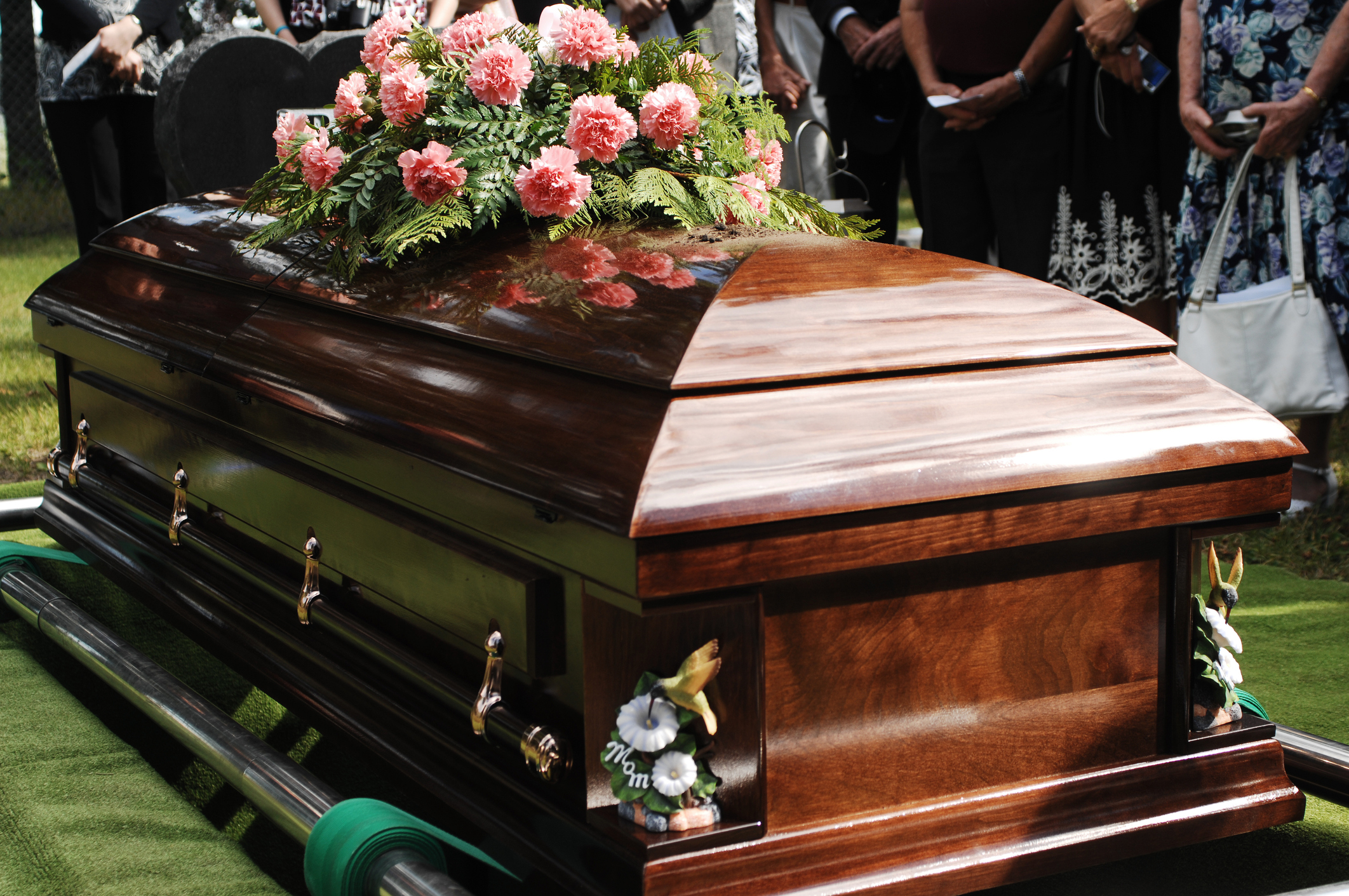
The Complete Guide to Burials
When a loved one dies, one of the immediate next steps is planning the burial. Even those who opt for cremation may choose a cemetery burial, making this a critical consideration for virtually everyone.
While it may seem overwhelming at first, with Sunset Funeral Home’s simple step-by-step planning guide, you’ll ensure you’ve addressed the most vital pieces of the burial process.
Where to Begin
If you’ve opted for a cemetery burial — with the body itself or cremated remains — the first step is finding a cemetery. Most are classified as either “traditional” or “memorial” gardens” — the former allows more ornate headstones, monuments, and, even, large private or family mausoleums, whereas the gardens often restrict remembrances to flush-ground memorials.
Within these cemeteries, there are often four types of ground plots: single, companion, family, and those for cremated remains. As the names would suggest, single and companion plots accommodate one or two caskets, respectively, while family plots are typically small areas dedicated to four or more spaces. Most cemeteries also have areas for cremated remains, whether they’re in the ground like a traditional burial plot, in an urn garden, or in an above-ground columbarium.
Burials typically take place within a few days of a death, so it’s important to begin planning as quickly as possible. In some religions, burials are slated to occur even sooner religious Jews and Muslims, for example, are traditionally interred within 24 hours of death, whenever possible.
Sunset Cemetery of Evansville, Indiana will be able to walk you through the steps for burial, including the items you’ll need to purchase immediately. These include the plot itself, the casket, and a vault or liner. Selection of the memorial or monument generally takes place in the weeks or months following the burial.
Purchasing a Burial Space
Once you’ve selected a cemetery and determined the type of plot for your loved one, you’ll need to purchase the grave space itself. Unlike other property purchases, buying a grave doesn’t mean you own the land — the property and related responsibilities still lie with the cemetery itself. In this case, buying a space means you have the authority to determine who will be interred there, as well as the right to install a headstone or memorial on the grave.
It is almost always less expensive to purchase a burial plot in advance so, before you secure any costly space, be sure your loved one didn’t leave a deed or other directive in his/her will. And, likewise, if you’re in the process of pre-planning your own burial, consider purchasing multiple spaces to be used by your family in the future. This will not only save money but ensure you’re all interred together when your times come.
The cost of a burial space is based on the location within the cemetery, the type of plot — single, companion, family, or cremated remains — and the number of plots you’re purchasing at the time. Keep in mind these fees do not include the vault or liner, so be sure to budget for those key pieces. Find out more about Sunset Funeral Home, Cremation Center & Cemetery’s pricing options here.
You'll Need a Vault in Most Cases
Most cemeteries, including Sunset, require vaults. Also called liners or outer burial containers, vaults are made out of strong, long-lasting materials such as concrete or metal. Before interment, the casket will be placed in the vault or liner.
The benefit of vaults is that they keep your loved one’s remains safe from the weight of the earth. As time goes on, unprotected caskets can disintegrate or be destroyed by external factors —heavy rains can cause the ground to collapse, for example. These considerations are especially important for cemeteries in low-lying areas.
Keep in mind, though, that there are many types of vaults at a variety of price points. Unless it’s your personal preference, there’s no need to opt for a higher-cost vault — simple, low-cost liners are as readily accepted at most cemeteries as the pricier containers. The price difference, though, can be significant: a standard liner can cost hundreds while high-end vaults can cost several thousands.
What to Expect During the Burial
If a burial immediately follows a funeral service, the funeral director will guide the family and friends to the cemetery. The procession of cars typically follows the hearse, with headlights on to indicate to other drivers that the line should not be interrupted. Some mourners may choose not to attend the burial, leaving close family and friends to say their final goodbye. Sunset has its funeral home on the premises, avoiding the need for funeral processions through street or highway traffic.
The cemetery service, often called the “committal” service, many times takes place in a cemetery chapel rather than at the graveside. During the committal service, there may be readings, eulogies, prayers, and final remarks. The advantage of the cemetery chapel service is that the mourners are in a comfortable environment, no matter what the weather or ground conditions. A cemetery chapel generally is easily accessible for older attendees, who may have difficulty walking across a cemetery section to the gravesite, especially if the ground is uneven or soft from rain.
If the service or memorial occurs graveside, mourners will assemble at the designated plot for words of committal as described above. The casket will be set up above the grave during the graveside service. Flower arrangements or tributes sent to the funeral home will be placed graveside. In most cases, the casket is lowered into the grave immediately after the family and friends depart. Sometimes a family member or funeral director will stay behind to witness the event.
A Burial Can Be Delayed Due to Weather
Sometimes the ground can be frozen so deep in the winter that a grave cannot be dug on the day of the service. In some cases, heating devices placed over the grave are used so that the grave can be dug.
When it comes to rain or snow, funeral director and cemeteries have a variety of options in place. Some choose to distribute umbrellas to mourners, while others install temporary tents — common in hot summer months as well — that protect the casket as well as the mourners from rain or snow. Again, the cemetery chapel service, where mourners say “goodbye” in a cemetery chapel rather than at the graveside, eliminates the issues associated with inclement weather.
Do Friends and Family Always Attend the Burial?
Some families opt for a private cemetery chapel service or graveside ceremony for immediate relatives and very close friends only. If this is the case, be sure to communicate your wishes to the funeral director and in any announcements made. Often families opt for a memorial service or other reception for extended family, friends, neighbors, and colleagues, and limit burial attendance to just those closest to the deceased.
Even if graveside or cemetery chapel services are made public, mourners may choose not to attend and will either see the family at a post-service reception or will follow up with a heartfelt note or condolence in the days that follow. The elderly may also choose not to attend the burial, if there is a graveside service and if the grave is not easily accessible. Unless these circumstances apply, though, immediate family members typically attend the funeral and follow the procession to the cemetery.
Planning a burial in the hours that follow a loved one’s death can be challenging. If you feel the need to discuss any aspect of planning a burial, work closely with a funeral professional and be sure to understand what’s needed, what’s not and how to best weigh the variety of options presented.
Whether you choose traditional interment or cremation, a burial comes with unique considerations that likely fall outside your experience. But, together, we can navigate the hurdles and ensure that you select the right type of burial for your loved one.
by Jaime Hollander, Sunset Contributor


